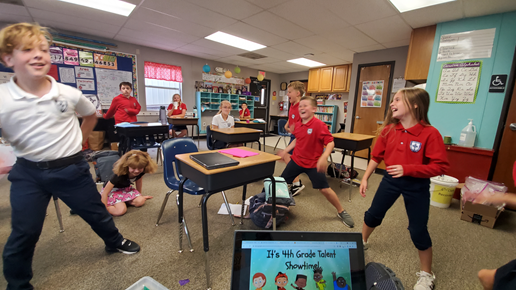Holy Cross Christian Academy utilizes Google Workspace for both staff and students. Student accounts are created upon enrollment for all students from PK2.5 through eighth grade. In response to the pandemic and the need for standardized devices, HCCA implemented a 1:1 Chromebook distribution for students in grades 3-8 in August 2020. Students in grades K-2 continue to share a common Chromebook cart (COW) equipped with 20 devices. Beginning in kindergarten and continuing through second grade, students work at their own pace through introductory technology curriculum on the Learning.com website. Students also learn how to log into and out of their computer, how to open and close the Chromebook, and how to use input devices (mouse, keyboard, trackpad, and stylus). Third through fifth graders begin each year by practicing keyboarding skills on the Typing Club website for the first six weeks of school. Practice in the use of Google Apps (Docs, Sheets, Slides, Drawings and Forms) comprises the curriculum for the remainder of the year. Sixth graders dive deeply into programming on the Scratch website following the Starting from Scratch curriculum developed by the Royal Society of Edinburgh.
Seventh and eighth grade students focus on multimedia projects: photo editing in Pixlr, 3D drawing in SketchUp for Schools, and video editing using WeVideo. In addition, these students spend approximately one grading period working at their own pace through the HTML/CSS (7th) and JavaScript (8th) curriculum on the Khan Academy website. Digital Citizenship is covered throughout the year in all grades through the curriculum provided by Common Sense Media on their website.
Although many of the technology TEKS for elementary and middle school are covered, there are gaps in the program that could be filled through a more uniform curriculum.






